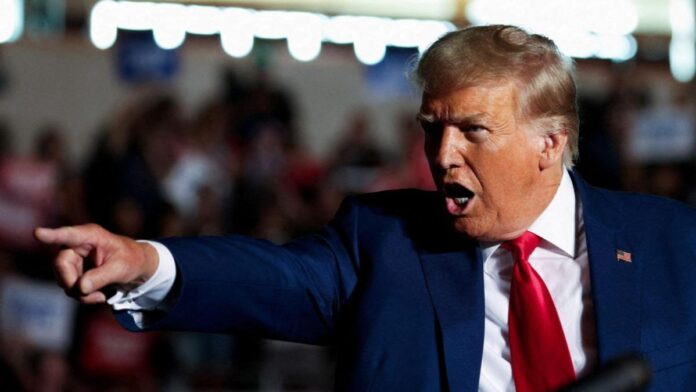Donald Trump’s return to the US presidency in 2024 is set to reshape foreign policies, with particular implications for South Asia and the Middle East. Known for his unpredictable diplomatic style, his second term could usher in a period of renewed tensions, strategic realignments, and diplomatic shifts that will affect countries across these regions.
South Asia’s Tense Anticipation
For countries in South Asia, Trump’s return brings both hope and anxiety. His unorthodox diplomacy, often characterized by bold moves and aggressive stances, will create an environment of uncertainty in the region. The countries of South Asia, including Bangladesh, Pakistan, and Afghanistan, are closely watching how his second term will influence their future political and diplomatic landscapes.
Bangladesh: The political dynamics in Bangladesh could see major shifts as Trump returns to power. Known for his outspoken criticism of regimes he perceives as problematic, Trump’s stance on Bangladesh’s human rights issues could affect its relationship with the U.S. While his administration may align with Bangladesh’s leadership in terms of regional security, this could exacerbate tensions within the country as opposition groups push for stronger Western relations.
Pakistan: Trump’s previous dealings with Pakistan were marked by harsh criticism, especially regarding its role in Afghanistan. With Trump back in power, Pakistan could face continued pressure on counterterrorism efforts. Although his foreign policy tends to favour transactional relationships, Pakistan will likely remain wary of any future military aid restrictions.
Afghanistan: Trump’s controversial decision to pull US troops out of Afghanistan could continue to define his approach in the region. His administration’s minimalist foreign policy might lean toward prioritizing counterterrorism operations without re-engaging in the complex dynamics of nation-building, a scenario that may leave Afghanistan vulnerable to instability in the coming years.
Sri Lanka and Nepal: Trump’s policies toward Sri Lanka and Nepal could follow his broader pattern of limited involvement unless there are immediate geopolitical concerns. In Sri Lanka, while his administration may respond to any shifts in Chinese influence, Trump’s focus will likely be on maintaining strategic alignments rather than directly intervening in their internal issues. Nepal’s complex balancing act between India and China may draw continued attention as Trump seeks to counter China’s influence in the region.
Middle East: The Trump Doctrine and Israel-Gaza Conflict
Trump’s return is poised to significantly impact US foreign policy in the Middle East, especially concerning the Israel-Gaza conflict. During his first term, Trump was a staunch ally of Israel, which led to a hardline approach toward Palestinian territories and Iran.
Israel: Israel will likely continue to receive unwavering support from a Trump administration, particularly in its defence initiatives. As tensions flare in Gaza, Trump’s policies may tilt even further in Israel’s favour, backing their military operations and reinforcing support for Netanyahu’s government. However, this could deepen divisions and make any future peace talks more difficult.
Iran: Trump’s aggressive stance on Iran, marked by the withdrawal from the Iran nuclear deal and the imposition of harsh sanctions, will likely intensify. His second term will likely bring more pressure on Iran, with efforts to stifle its influence in the Middle East and counter its alliances with groups across the region. This could lead to more regional instability, as Iran responds to the mounting pressure.
Gulf States: Trump’s policies will continue to focus on maintaining strong relationships with key Gulf states like Saudi Arabia and the UAE, especially as tensions with Iran persist. However, his transactional diplomacy might test the durability of these alliances as these countries continue to expand relations with China and other regional powers.
Global Ramifications of Trump’s Return
Beyond South Asia and the Middle East, Trump’s second term will have wider global consequences. His policy toward China will continue to be central, with economic and military tensions playing out in the Indo-Pacific. Trump’s “America First” approach will continue to impact global trade dynamics, shifting the balance in favour of the U.S., but causing friction with European allies and trade partners.
In Europe, Trump’s scepticism toward NATO and multilateralism will test transatlantic relations. While he is likely to maintain strong defence ties with certain NATO members, his approach will be less focused on collective security and more on securing U.S. interests in the region.

